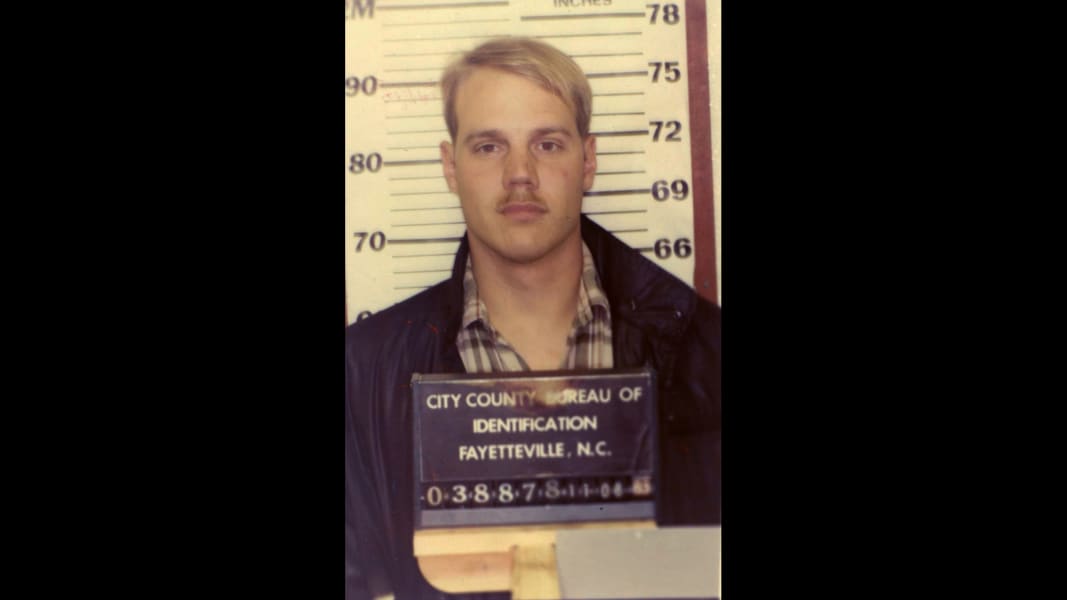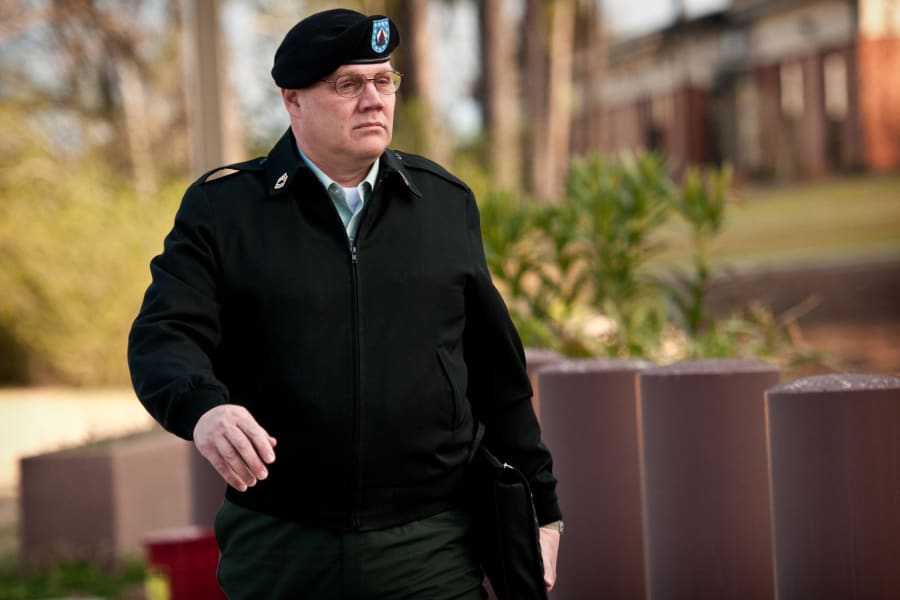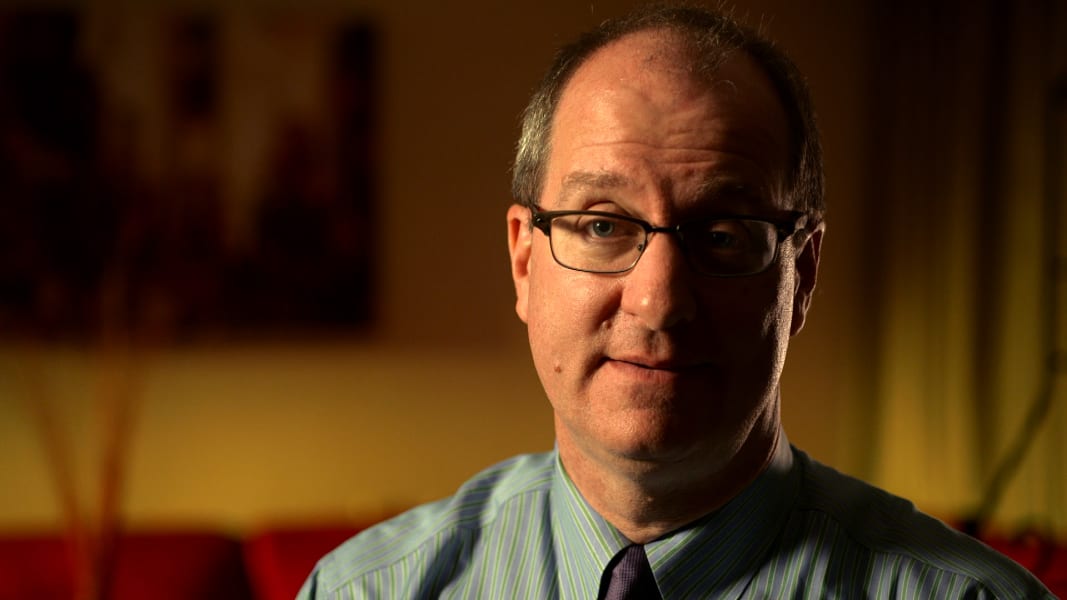Share


1 of 17
The death row case of former U.S. Army Master Sgt. Timothy Hennis is unprecedented. "Tim Hennis is the only person in United States history who's been tried for his life three times after guilty and not guilty verdicts," said Scott Whisnant, who covered the case as a reporter and whose book titled "Innocent Victims" was made into a 1996 TV movie. Click through the gallery to learn more about one of the most bizarre, surprising and heinous murder cases in recent memory. Fayetteville Observer
In 1985, Hennis was an Army soldier based at Fort Bragg, North Carolina. One morning he visited the nearby home of Kathryn and Gary Eastburn, answering their newspaper ad to adopt their dog. Court Exhibit
Four days later, police found the stabbed bodies of Kathryn Eastburn, left, and two of her daughters in the home. The mother had been raped, investigators said. Her husband Gary Eastburn, right, was an Air Force officer undergoing training in Alabama at the time of the killings, police said. From Gary Eastbur
Five-year-old Kara, shown here, was also stabbed to death. Police found her body in her bedroom, prosecutors told CNN's "Death Row Stories." Fayetteville Observer
Erin Eastburn, 3, also was found in the home, stabbed to death. Fayetteville Observer
Erin's body was found in the master bedroom, prosecutors told CNN's "Death Row Stories." Kathryn Eastburn's body was also found there. Court Exhibit
A third Eastburn child, 22-month-old Jana, was found alive in the house and unharmed. Hennis came forward to police when he heard on TV news that authorities were looking for a man who visited the house in response to a newspaper ad. Court Exhibit
Gary Eastburn told police several items were missing from his home including an envelope of cash, an ATM card and the Eastburn account password. Police said the ATM card was used to withdraw $150 twice over two days. Prosecutors said Hennis was behind on his rent -- which was about $300. He paid his rent the Monday after the killings, prosecutors said. A woman who used the ATM shortly after the Eastburns' card was used told investigators she saw a man nearby matching Hennis' description. Court Exhibit
Investigators found a witness, Patrick Cone, who said he saw a tall white man wearing jeans, a knit cap and a Members Only jacket leaving the Eastburns' driveway carrying a trash bag. A police artist drew this sketch of the man based on Cone's description. Prosecutors said the sketch resembled Hennis. Court Exhibit
Hennis was arrested, charged and put on trial. Jurors rendered a guilty verdict and sentenced Hennis to death. Shortly after his conviction while he sat on North Carolina's death row, Hennis received a letter that has never been explained. It read: "Dear Mr. Hennis, I did the crime, I murdered the Eastburns. Sorry you're doing the time. I'll be safely out of North Carolina when you read this. Thanks, Mr. X." Court Exhibit
Hennis' attorneys filed an appeal to the North Carolina Supreme Court based on the argument that jurors were unduly influenced by gruesome crime scene photos displayed by prosecutors. The high court ruled that Hennis should be granted a retrial. Court Exhibit
During the retrial, defense attorneys revealed a surprise witness, John Raupaugh. Raupaugh "lived down the street from the Eastburns," said Whisnant. "He was an uneasy sleeper and had a habit of walking the neighborhood at 3 in the morning. He often wore a beanie hat and had a black Members Only jacket." Raupaugh's testimony, defense attorneys said, gave jurors the reasonable doubt they needed to acquit Hennis in 1989. Hennis was freed. He chose to re-enlist in the Army, where he continued his military career. State Archives of North Carolina
Prosecutors continued to pursue the case. In 2006, vaginal swabs from a rape kit taken from Kathryn Eastburn's body yielded new evidence. DNA testing was an imperfect science in the 1980s, so the semen found wasn't pursued as evidence during the first trial. But by the 2000s, technological advances in DNA analysis had improved. Experts said the DNA from Eastburn's rape kit was consistent with Hennis' DNA. Court Exhibit
Prosecutors called Gary Eastburn to deliver the news. "You could have knocked me over with a feather when I got that call," he told CNN's "Death Row Stories." "I was just hit with this wave of emotion like, 'God, I don't believe it.' " Fayetteville Observer
The DNA revelation also shocked Hennis' defense attorney, Billy Richardson. He told CNN's "Death Row Stories," "It was just like somebody had taken a two-by-four and hit me upside the head with it." CNN
A team of military attorneys evaluated the case and the Army decided to pursue it. Hennis was recalled to active duty two years after his retirement and promptly arrested on three counts of murder. In 2010, a jury rendered a guilty verdict, and he was sentenced to death. Hennis now sits on death row, awaiting appeals at Fort Leavenworth military prison in Kansas. Fayetteville Observer
But many unanswered questions remain. "There's a ton of physical evidence in that house that they can't explain," Whisnant told CNN's "Death Row Stories." A head hair was found in the Eastburns' bed that is not Hennis', Whisnant said. Unidentified DNA was found under Kathryn Eastburn's fingernails. "We should be running that DNA against our known database," Whisnant said. "Let's find out what happened." CNN
























